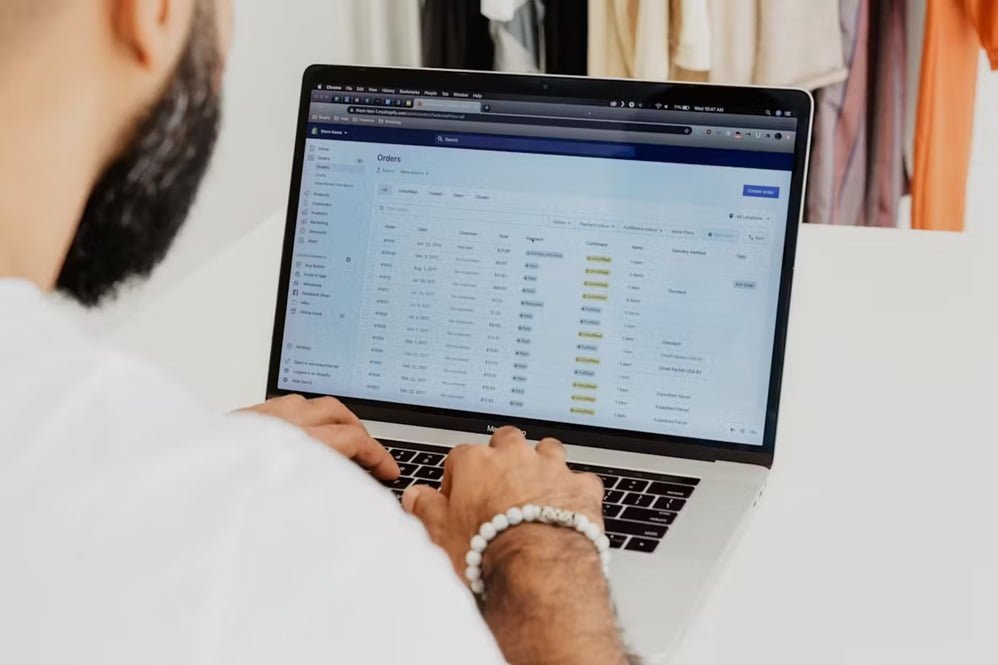When it comes to enhancing the exterior of your home, the choice between vinyl cladding vs weatherboard is a critical decision. Both materials offer distinct advantages, and understanding their differences is key to selecting the best fit for your home’s aesthetic and functional needs. Vinyl cladding is known for its low-maintenance appeal and modern look, while weatherboard, often made from timber, offers a classic, timeless charm that suits traditional or rustic home designs.
As exterior cladding plays a significant role in protecting your home from the elements, it’s important to weigh the long-term durability and performance of each option. Homeowners also need to consider factors like maintenance, installation, energy efficiency, and overall cost when making this decision. In this article, we’ll explore these aspects in detail, helping you understand which material might be the right choice for your home, based on your style preferences, budget, and climate considerations.
By the end, you’ll have a clearer understanding of how vinyl cladding vs weatherboard can impact your home’s appearance, energy efficiency, and value, empowering you to make a confident and informed decision.
Material Composition and Durability
When choosing between vinyl cladding and weatherboard, understanding the material composition and durability of each is crucial to making the right decision for your home.
Vinyl cladding is made from polyvinyl chloride (PVC), a lightweight yet strong material that is highly resistant to weather-related wear and tear. Its composition makes it immune to issues like rust, rot, and corrosion, making it an ideal option for homes in areas prone to moisture, such as coastal or humid environments. Vinyl cladding also resists fading, cracking, and damage from UV exposure, ensuring a long-lasting appearance with minimal maintenance.
In contrast, weatherboard is typically made from timber or, in modern applications, materials like fiber cement. Timber weatherboard offers a traditional, natural aesthetic but requires more maintenance due to its organic nature. Exposure to moisture can lead to issues such as warping, rotting, and termite damage if not properly treated. To preserve its longevity, regular maintenance like repainting, sealing, or staining is essential. However, weatherboard made from fiber cement is a more durable alternative, offering greater resistance to water damage, pests, and decay while retaining the classic wooden look.
In terms of overall durability, vinyl cladding tends to last longer without the need for extensive upkeep. However, weatherboard offers a timeless appeal and, with proper care, can also stand the test of time. Your choice will largely depend on the level of maintenance you’re comfortable with and the climate conditions of your location.
Installation Process and Maintenance Requirements
The installation and maintenance of exterior cladding are critical considerations for homeowners, as they directly impact both short-term convenience and long-term upkeep.
Vinyl cladding is often favored for its ease of installation. Due to its lightweight nature, vinyl panels can be quickly installed over a variety of existing surfaces, which can reduce labor time and cost. Many contractors are familiar with the installation process, which involves securing the panels to the exterior of the home using simple tools and fasteners. Another advantage is that vinyl cladding doesn’t require painting or sealing after installation, offering a near-instant transformation of your home’s appearance with little hassle.
On the maintenance front, vinyl cladding is considered a low-maintenance option. Its resistance to moisture, rot, and pests means homeowners don’t have to worry about regular treatments or repairs. Cleaning vinyl cladding is straightforward usually requiring only a simple wash with water and a mild detergent to keep it looking fresh. This makes it an appealing option for homeowners who want a durable, hassle-free exterior that looks good with minimal effort.
Weatherboard, particularly the traditional timber variety, typically requires more attention both during installation and throughout its lifespan. Timber boards need to be carefully installed to ensure proper spacing and alignment, as well as adequate ventilation to prevent moisture buildup. The process can be more labor-intensive, and improper installation can lead to issues like warping or rotting over time. Additionally, most weatherboard installations require a fresh coat of paint or stain after installation, which adds to the initial labor and cost.
In terms of maintenance, weatherboard requires regular upkeep to protect it from the elements. Timber weatherboard, in particular, will need periodic repainting, sealing, or staining to prevent deterioration from exposure to moisture, UV rays, and pests. Failure to maintain it can result in peeling paint, warping, or even termite damage. Fiber cement weatherboard is a lower-maintenance alternative, but it still requires occasional repainting or sealing to maintain its appearance and integrity.
Ultimately, the choice between vinyl cladding and weatherboard will depend on how much time and effort you’re willing to invest in the ongoing care of your home’s exterior. Vinyl cladding offers a lower-maintenance solution with a quick, efficient installation process, while weatherboard, though requiring more upkeep, can provide a more traditional and customizable look.
Cost Comparison: Initial Investment vs. Long-Term Value
Cost is often a deciding factor when choosing between vinyl cladding and weatherboard, as both materials come with distinct price points and long-term financial implications.
Vinyl cladding is generally considered a more affordable option in terms of both initial investment and long-term savings. The cost of the material itself is typically lower compared to traditional timber weatherboard, and because vinyl is lightweight and easy to install, labor costs are usually reduced as well. This can make vinyl cladding an attractive option for homeowners working within a budget or looking for a quicker renovation project. Additionally, vinyl’s low-maintenance nature means you’ll save money on upkeep over time, as it doesn’t require repainting, sealing, or frequent repairs. This results in significant long-term savings, especially in climates where homes are exposed to harsh weather conditions.
In contrast, weatherboard, particularly timber weatherboard, tends to have a higher upfront cost due to the price of the material and the labor-intensive installation process. Timber boards must be precisely installed, often requiring more skilled labor, which can increase the overall project cost. Furthermore, the ongoing maintenance of weatherboard adds to the long-term expense. Homeowners must factor in the cost of repainting, sealing, and repairing any damage caused by moisture or pests. However, weatherboard, especially timber, can add significant value to a home due to its classic, high-end appearance, making it a worthwhile investment for those looking to enhance the aesthetic and market value of their property.
That said, modern fiber cement weatherboard is a middle-ground option. While it’s more expensive than vinyl, it’s often less costly than timber and requires less maintenance. Fiber cement boards are also highly durable, meaning they can offer long-term value without the need for frequent upkeep.
In summary, while vinyl cladding tends to be the more cost-effective choice both upfront and over time, weatherboard particularly timber can add greater aesthetic value and appeal. Your decision will ultimately depend on whether you prioritize initial affordability and low maintenance, or if you’re willing to invest more in a material that may increase your home’s overall market value in the long run.
Energy Efficiency and Insulation Properties
The energy efficiency of your home is significantly influenced by the type of exterior cladding you choose, as it impacts how well your home retains heat in the winter and stays cool in the summer.
Vinyl cladding offers moderate insulation properties on its own, but it can be enhanced by adding an insulated backing during installation. Insulated vinyl cladding features a layer of foam insulation that is attached to the back of the cladding panels, improving the overall thermal performance of your home. This additional insulation can help regulate indoor temperatures, reduce energy consumption, and lower heating and cooling costs. The lightweight nature of vinyl also helps create a barrier against external elements, though its natural insulation capacity without added backing is relatively limited compared to other materials.
On the other hand, weatherboard, especially timber, offers better natural insulation properties. Wood is a natural insulator, which means it can help maintain a more consistent indoor temperature without requiring additional insulation layers. This makes timber weatherboard a more energy-efficient option right out of the box. Fiber cement weatherboard, while not as insulating as timber, can still provide decent thermal resistance, especially when paired with a high-quality insulation system underneath.
When it comes to energy efficiency, the climate of your region plays a key role in determining which material is best suited for your home. If you live in an area with extreme temperatures, investing in insulated vinyl cladding or weatherboard with additional insulation can significantly improve your home’s energy efficiency. In milder climates, the natural insulation provided by timber or fiber cement weatherboard might be sufficient to keep your home comfortable year-round.
Overall, if energy efficiency is a top priority, weatherboard particularly timber tends to offer better insulation properties. However, insulated vinyl cladding can also be a strong contender, especially for homeowners looking for a cost-effective, low-maintenance solution that improves thermal performance.
Aesthetic Appeal and Design Flexibility
One of the most noticeable differences between vinyl cladding and weatherboard is the aesthetic they bring to a home, as well as the range of design options available with each material.
Vinyl cladding is prized for its versatility in terms of color and texture options. It is available in a wide variety of colors, finishes, and styles, making it easier for homeowners to customize the look of their exterior to match their personal preferences. From sleek modern finishes to designs that mimic the appearance of natural wood, vinyl cladding offers design flexibility without the need for ongoing painting or staining. While vinyl cladding can provide a clean, modern look, it may lack the natural warmth and authenticity that some homeowners desire, especially those who prefer the timeless appeal of traditional materials.
In contrast, weatherboard particularly timber weatherboard offers a classic, natural aesthetic that many homeowners find highly appealing. Timber’s organic grain and texture provide a timeless, traditional charm that adds character to homes. Weatherboard’s appeal lies in its ability to create a warm, inviting look that enhances the overall curb appeal of a property, particularly in older or rustic home designs. The ability to paint and stain timber weatherboard allows homeowners to refresh or change the look of their exterior over time, offering greater long-term design flexibility. Additionally, timber weatherboard can be crafted in different profiles, from smooth and sleek to more rugged, traditional finishes.
Fiber cement weatherboard bridges the gap between the two, offering the aesthetic appeal of timber with the low maintenance of modern materials. It can be painted in any color, providing more flexibility than vinyl cladding while still offering greater durability than timber.
When it comes to design flexibility, vinyl cladding may offer a broader array of options upfront with less effort, as it doesn’t require ongoing painting or finishing. However, for homeowners who value the authenticity and timeless appeal of natural wood, weatherboard especially timber provides a richness in texture and design that vinyl may struggle to replicate. The choice between the two ultimately depends on whether you prioritize ease of use and variety in colors, or the aesthetic beauty of a natural, customizable material.
Conclusion
Choosing between vinyl cladding and weatherboard for your home’s exterior comes down to balancing aesthetics, durability, maintenance, and cost. Vinyl cladding offers a modern, low-maintenance solution with a wide range of design options, making it an excellent choice for homeowners seeking convenience and long-term savings. On the other hand, weatherboard, particularly timber, delivers a timeless, natural beauty that enhances curb appeal and offers greater flexibility in terms of customization, though it requires more maintenance and comes with a higher initial investment.
Both materials have their strengths, so the best choice depends on your specific needs, climate conditions, and personal preferences. Whether you opt for the ease of vinyl or the charm of weatherboard, understanding these key differences will help you make a well-informed decision that suits your home and lifestyle.



